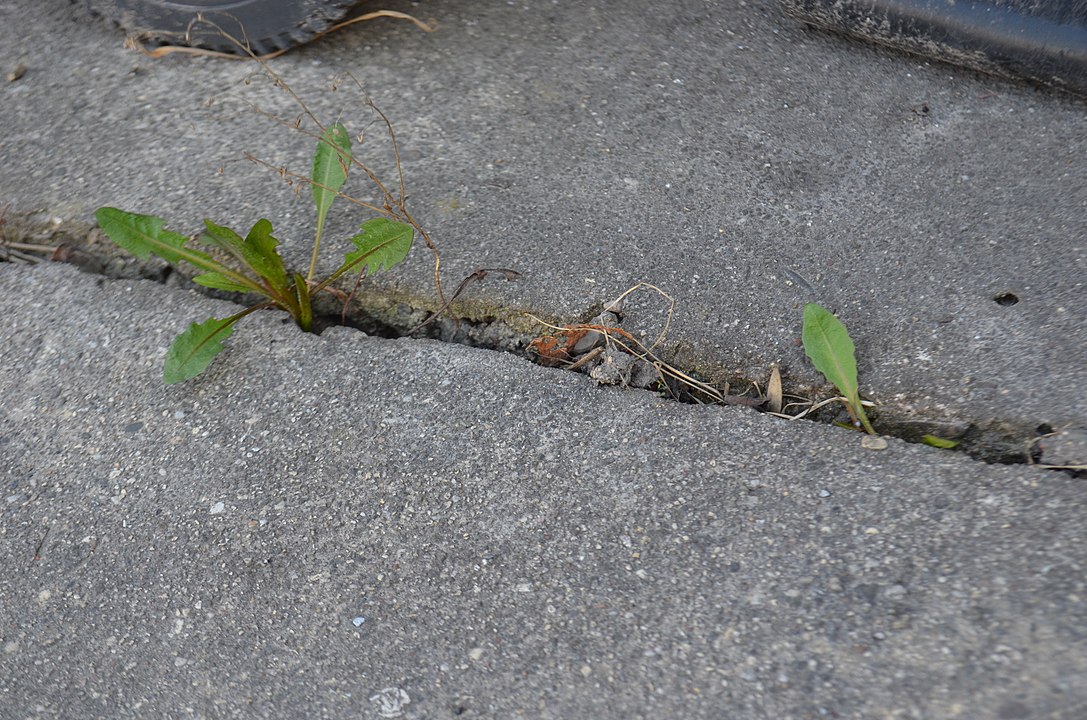Unwanted plant growth
Because that is ‘weed’: a plant that is in the wrong place. That says nothing about the properties or the usefulness of that plant. That ‘weed’ can be a sown lady’s mantle, a poppy, comfrey; all venerable plants, but the qualities of those plants are not desired in that place. In that sense, weeds are comparable to the English anthropologist Mary Douglas’ definition of ‘dirty’: ‘Dirt is matter out of place’: a hair in the soup is ‘matter out of place’. For example, weeds are ‘plants out of place’.
Weed control
Weeding is – no matter how tedious – the best way to get rid of unwanted plant growth. Weed when the soil is slightly damp; weeds in clay soil in particular can then be easily removed. Heavy soils dry up to a hard, impenetrable crust; plants with tap roots then break off instead of being pulled out of the ground. The wind scatters seeds of weeds; regular hoeing of germinating weeds prevents a lot of weeding. Weeds with taproots such as dandelion and milk thistle should be removed root and all. Hoeing does not help: dandelion and thistle sprout again from the cut root. Whoever mills the ground containing dandelions and thistles, chops the taproots of these weeds into countless pieces, which in turn produce countless dandelions and thistles. Leave the weeds in dry weather for a day, the weeds wither and can easily be raked together for the compost heap.
Anti-root cloth
Apply anti-root cloth approximately 5 centimeters below ground level to prevent weeds on tile and gravel paths. Anti-root cloth consists of woven black plastic and only allows water to pass through. It is light-tight and roots hardly get through. Almost not, because after some time, experience has shown that thistles still grow through the anti-root cloth and the gravel. Also useful, but very unsightly, is anti-root cloth under young shrub plantations, to keep the soil under the shrubs free of weeds. Even difficult weeds such as ground elder and Bermuda grass do not grow through anti-root cloth.
Weeds on paths and pavements can also be controlled with hot water. That pouring with hot water has to be repeated regularly and the weeds do not disappear completely, but it remains under control. The best time to water is late afternoon when the plants have the least water. The hot water heats up the above-ground plant parts, causes the plant to dry out and die if there is sufficient heat.

